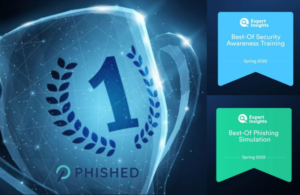Phishing Simulation Training
A phishing simulation is a security awareness training tool that aims to teach employees how to recognise phishing attacks, avoid them and report them. With phishing attacks on the rise, organizations need to educate their staff about these threats and take a more proactive approach.
A good phishing simulation training platform offers several features that can improve the effectiveness of your phishing awareness training program. It’s important to look for a tool that has an easy-to-use interface, great reporting and pre-loaded templates to help with training.

The best phishing simulation platforms also include a robust reporting feature that gives you full visibility on phishing risk from the whole company down to individual users, including insights into phishing campaign trends and success rates. This will help you identify areas where phishing awareness training can be improved and provide insight into your users’ risk levels.
5 Tips For Successful Phishing Simulation Training
Integrated with other training sources and tests to create a holistic phishing risk score for every employee, department and organization. As your employees become more familiar with spotting suspicious emails, they’ll report more phishing attempts. This is a vital part of your cyber security strategy, and helps to build your human firewalls against fraudulent email attacks.
If you want to build a strong culture around security, it’s vital to get senior management on board with the idea of phishing simulation training. This way, you can reinforce the message that security is a company-wide responsibility, no matter who’s involved in the process.
It’s also a great opportunity to bring together different departments and teams within the company. This will allow them to work together, share resources and knowledge, and respond more quickly to potential phishing attacks. Choose a tool that is easy to use and has pre-loaded templates for a realistic simulation. This will save you time and effort when it comes to designing the actual phishing attack.
In order to make your phishing simulations successful, it’s crucial to plan and execute them correctly. The first step is to set goals and objectives for the campaign. Then, you can set the target audience for the campaign and design content accordingly.
Once you have a clear idea of the goals for your phishing simulation, it’s vital to communicate these to your team members. This will ensure that everyone understands the objectives and how the phishing test will be delivered. Another important factor is to keep the phishing simulation training fun and engaging for participants. This will help to increase the participation rate and encourage them to continue to train.
This can be done by using a gamification solution that makes the experience fun and exciting. This can make phishing simulations more fun for people to participate in, while helping to create a positive cybersecurity culture at your business. As with any other security awareness program, a phishing simulation needs to be regularly run and monitored. This will help to ensure that your phishing awareness program is constantly improving and remains effective at combating the latest attacks.